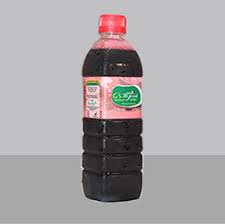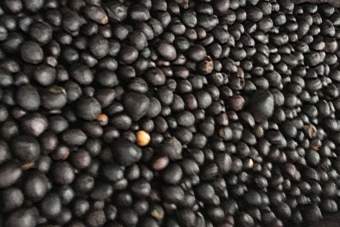Pineapple Chips Production in Nigeria; The Feasibility Report.

Pineapple (Ananas comosus) belongs to the bromeliad family, which contains fifty (50) genera and about two thousand, five hundred (2,500) known species. It is indigenous to South America and is said to originate from the area between Southern Brazil and Paraguay.
Pineapples have a wide cylindrical shape, a scaly green, brown or yellow skin and a regal crown of spiny, blue-green leaves. The fibrous flesh of pineapple is yellow in color and has a vibrant tropical flavor that balances the tastes of sweet and tart. The area closer to the base of the fruit has more sugar content and therefore a sweeter taste and more tender texture
It has dagger-like leaves (it is a monocotyledon), and it is cultivated as a biennial plant. The first year it undergoes vegetative growth where the plant produces the leaves and the second year a flowering stalk arises from the center. On this stalk are produced up to two hundred (200) flowers, an inflorescence, which latter forms a solid structure, called a multiple fruit.
The pineapple can be processed to:
– Pineapple Jam: Pineapple jam is solid gel made from the fruit pulp or juice, sugar, and pectin. Jam is used as a spread and is also used in the baking and confectionery industry.
– Pineapple Juice: Pineapple juice is highly appreciated for its high nutritional value and its particular exotic taste. There is a high demand for this juice locally and by the tourists.
– Vacuum Packed Fresh Pineapple: fresh cut pineapple is vacuum packed without any food preservative treatment. The vacuum packed fresh pineapple has to be marketed in a cool chain. It is characterized by a high nutritional value, natural taste, and a unique flavor. It is convenient for immediate consumption and compatible with emerging supermarket.
– Pineapple in Syrup
– Wine
Pineapple is the third most important tropical fruit in world production after banana and citrus. The processing of pineapple has made the fruit well known throughout the temperate developed world. Major pineapple products of international trade are canned slices, chunks, juice and fresh fruit.
The pineapple represents about twenty percent (20%) of the world production of tropical fruits and about seventy percent (70%) of the pineapple is consumed fresh in the country of origin. Brazil, Thailand, Philippines, and China produce about fifty percent (50%) of the world production. Since the last fifty (50) years, the world pineapple production has risen up by four hundred percent (400%).
Pineapple consumption will continue to grow at a moderate pace following rising income and population growth as well as marketing programmes aimed at promoting healthy, balanced nutrition.
The main driver behind the growing pineapple consumption will be the dynamically developing Asian market (primarily China, Indonesia, India, Viet Nam and the Philippines) and Latin American markets (the Dominican Republic and Costa Rica), where thanks to sustainable urban growth and rising living standards, the demand for high-quality fruit will continue to grow. An increasing number of consumers are demanding fresh fruit, which is becoming possible due to development of storage technologies.
An increasing demand for canned pineapples worldwide is also a factor, especially noticeable in the Philippines, Indonesia and China, which experienced a noticeable growth in canned pineapple exports over the recent years.
Driven by the anticipated growth of population and income level, the demand for high-quality fruit will continue to grow. Brazil, the Philippines, Indonesia, India and China held forty percent (40%) of pineapple consumption.
The countries with the highest consumption were Brazil (11% of the world total), the Philippines (8%), Indonesia (8%), India (7%), China (6%), Nigeria (5%), Thailand (5%), Costa Rica (4%), the U.S. (4%), Angola (3%), Mexico (3%), Colombia (3%), Ghana (3%), Viet Nam (2%), the Dominican Republic (2%). The remaining countries made up twenty-four percent (24%) of global pineapple market.
Pineapples are a widely traded commodity, with the share of export in total global output stood about thirteen to fouteen percent (13-14%) in 2007-2016. High trade intensity is determined mainly by the substantial distances between the main countries of pineapples manufacturing and key consuming countries.
Costa Rica was the largest exporter of pineapple worldwide, sending abroad approximately sixty-four percent (64%) of its output.
In 2016, the volume of global exports totalled three million, six hundred thousand (3,600,000) tons.
Nigeria is presently the eigth (8th) largest producer of the fruit in the world with a production capacity of one million, fifty-two thousand (1,052,000) metric tons. Almost all are consumed locally; the export market is yet to be exploited. With increasing demand for pineapple both locally and internationally, the products potential prospects are high for its production.
Nigeria has a high post harvest rate of fifty percent (50%) and in order to reduce the waste, create employment and increase the gross domestic product (GDP) of the country, this report seeks to examine the financial viability or otherwise of producing pineapple chips from fresh pineapples in Nigeria.
Dehydrated pineapple is a tasty snack, topping or ingredient that is low in calories but rich in vitamins and minerals. The dehydrating process does not detract from the pineapple’s nutrient value.
The proposed production volume is five hundred (500) kilogrammes per hour of fresh pineapples and the plant would operate at eighty percent (80%) of the installed capacity for a triple shift of eight (8) hours per day for three hundred (300) working days per annum.
Table of Contents
EXECUTIVE SUMMARY 1.0 Business Overview 1.1 Description of the Business 1.2 Vision and Mission Statement 1.3 Business Objective 1.4 Value Proposition 1.5 Critical Success Factor of the Business 1.6 Current Status of Business 1.7 Description of the Business Industry 1.8 Contribution to Local and National Economy 2. Marketing Plan 2.1 Description of product 2.2 Product Packaging and delivery 2.3 The Opportunity 2.4 Pricing Strategy 2.5 Target Market 2.6 Distribution and Delivery Strategy 2.7 Promotional Strategy 2.8 Competition 3. Production Plan 3.1 Description of the Location 3.2 Raw Materials 3.3 Production Equipment 3.4 Production Process 3.5 Production Cost 3.6 Stock Control Process 3.7 Pre-Operating activities and expenses 3.7.1 Operating Activities and Expenses 3.8 Project Implementation Schedule 4.0 Organizational and Management Plan 4.1 Ownership of the business 4.2 Profile of the promoters 4.3 Key Management Staff 4.3.2 Management Support Units 4.4 Details of salary schedule 5. Financial Plan 5.1 Financial Assumption 5.2 Start up Capital Estimation 5.3 Source of Capital 5.4 Security of Loan 5.5 Loan Repayment Plan 5.6 Profit and Loss Analysis 5.7 Cashflow Analysis 5.8 Viability Analysis 6.0 Business Risk and mitigation factor 6.1 Business Risks 6.2 SWOT Analysis
Project Specification:
Additional Info
Get this Report
Direct bank transfer
To order the report, Please do pay the sum of ₦150,000 into
Account Name : Foraminifera Market Research Ltd
Account Number : 274 20 569 37
Account Name : Foraminifera Market Research Ltd
Account Number : 101 76 603 95
Account Name : Foraminifera Ventures
Account Number : 011 66 066 32
Make your payment directly into our bank account. Please use your Order ID as the payment reference. Your order will not be shipped until the funds have cleared in our account.
Instructions
After payment call us on 01 -29 52 413 / 08033782777 or email us at foraminiferamarketresearch@yahoo.com with the payment details. After payment confirmation, the soft copy of the report would be sent to you within 24 hours.



